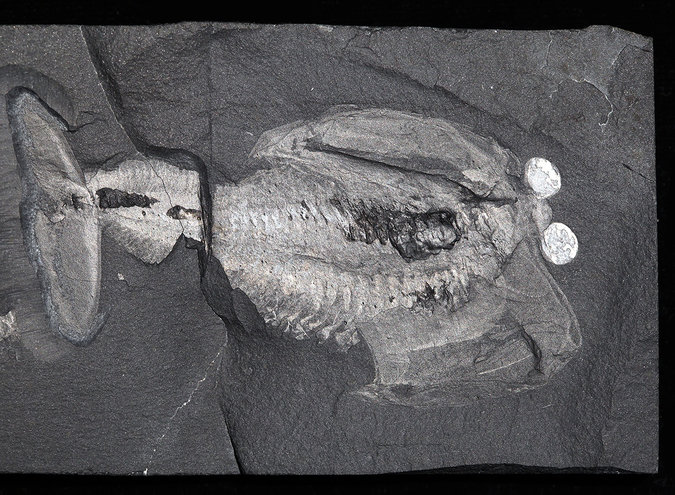A 500-million-year-old fossilized arthropod found in the Burgess Shale, a fossil field in the Canadian Rockies, may provide clues to how heads evolved in early animals. The fossil is a submarine-shaped arthropod, Odaraia alata, of the Middle Cambrian Period. A paper in Current Biology reports that both Odaraia alata, originally found about 100 years ago, and another ancient arthropod have a hard plate, known as the anterior sclerite, and eye-like features that were connected by nerves to their brains. They may have controlled their vision in much the same way that modern insects, crustaceans and spiders do.
Odaraia alata: 500 Million Old
 October 3rd, 2015
October 3rd, 2015  Riffin
Riffin 



 Posted in
Posted in  Tags:
Tags: 